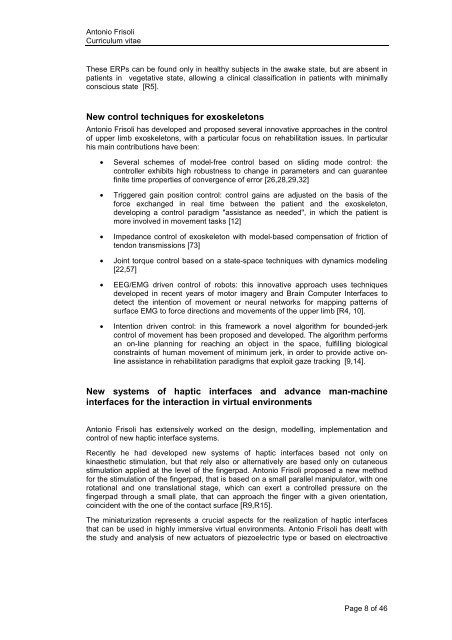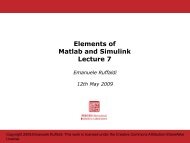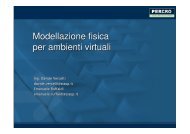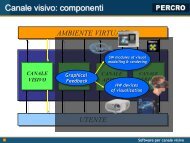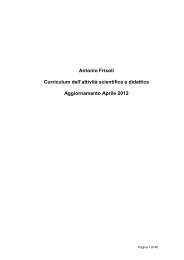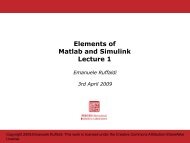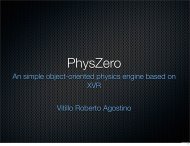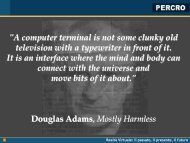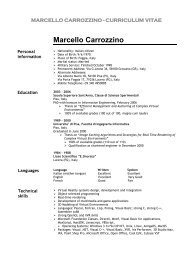English - Percro - Scuola Superiore Sant'Anna
English - Percro - Scuola Superiore Sant'Anna
English - Percro - Scuola Superiore Sant'Anna
You also want an ePaper? Increase the reach of your titles
YUMPU automatically turns print PDFs into web optimized ePapers that Google loves.
Antonio Frisoli<br />
Curriculum vitae<br />
These ERPs can be found only in healthy subjects in the awake state, but are absent in<br />
patients in vegetative state, allowing a clinical classification in patients with minimally<br />
conscious state [R5].<br />
New control techniques for exoskeletons<br />
Antonio Frisoli has developed and proposed several innovative approaches in the control<br />
of upper limb exoskeletons, with a particular focus on rehabilitation issues. In particular<br />
his main contributions have been:<br />
• Several schemes of model-free control based on sliding mode control: the<br />
controller exhibits high robustness to change in parameters and can guarantee<br />
finite time properties of convergence of error [26,28,29,32]<br />
• Triggered gain position control: control gains are adjusted on the basis of the<br />
force exchanged in real time between the patient and the exoskeleton,<br />
developing a control paradigm "assistance as needed", in which the patient is<br />
more involved in movement tasks [12]<br />
• Impedance control of exoskeleton with model-based compensation of friction of<br />
tendon transmissions [73]<br />
• Joint torque control based on a state-space techniques with dynamics modeling<br />
[22,57]<br />
• EEG/EMG driven control of robots: this innovative approach uses techniques<br />
developed in recent years of motor imagery and Brain Computer Interfaces to<br />
detect the intention of movement or neural networks for mapping patterns of<br />
surface EMG to force directions and movements of the upper limb [R4, 10].<br />
• Intention driven control: in this framework a novel algorithm for bounded-jerk<br />
control of movement has been proposed and developed. The algorithm performs<br />
an on-line planning for reaching an object in the space, fulfilling biological<br />
constraints of human movement of minimum jerk, in order to provide active online<br />
assistance in rehabilitation paradigms that exploit gaze tracking [9,14].<br />
New systems of haptic interfaces and advance man-machine<br />
interfaces for the interaction in virtual environments<br />
Antonio Frisoli has extensively worked on the design, modelling, implementation and<br />
control of new haptic interface systems.<br />
Recently he had developed new systems of haptic interfaces based not only on<br />
kinaesthetic stimulation, but that rely also or alternatively are based only on cutaneous<br />
stimulation applied at the level of the fingerpad. Antonio Frisoli proposed a new method<br />
for the stimulation of the fingerpad, that is based on a small parallel manipulator, with one<br />
rotational and one translational stage, which can exert a controlled pressure on the<br />
fingerpad through a small plate, that can approach the finger with a given orientation,<br />
coincident with the one of the contact surface [R9,R15].<br />
The miniaturization represents a crucial aspects for the realization of haptic interfaces<br />
that can be used in highly immersive virtual environments. Antonio Frisoli has dealt with<br />
the study and analysis of new actuators of piezoelectric type or based on electroactive<br />
Page 8 of 46


